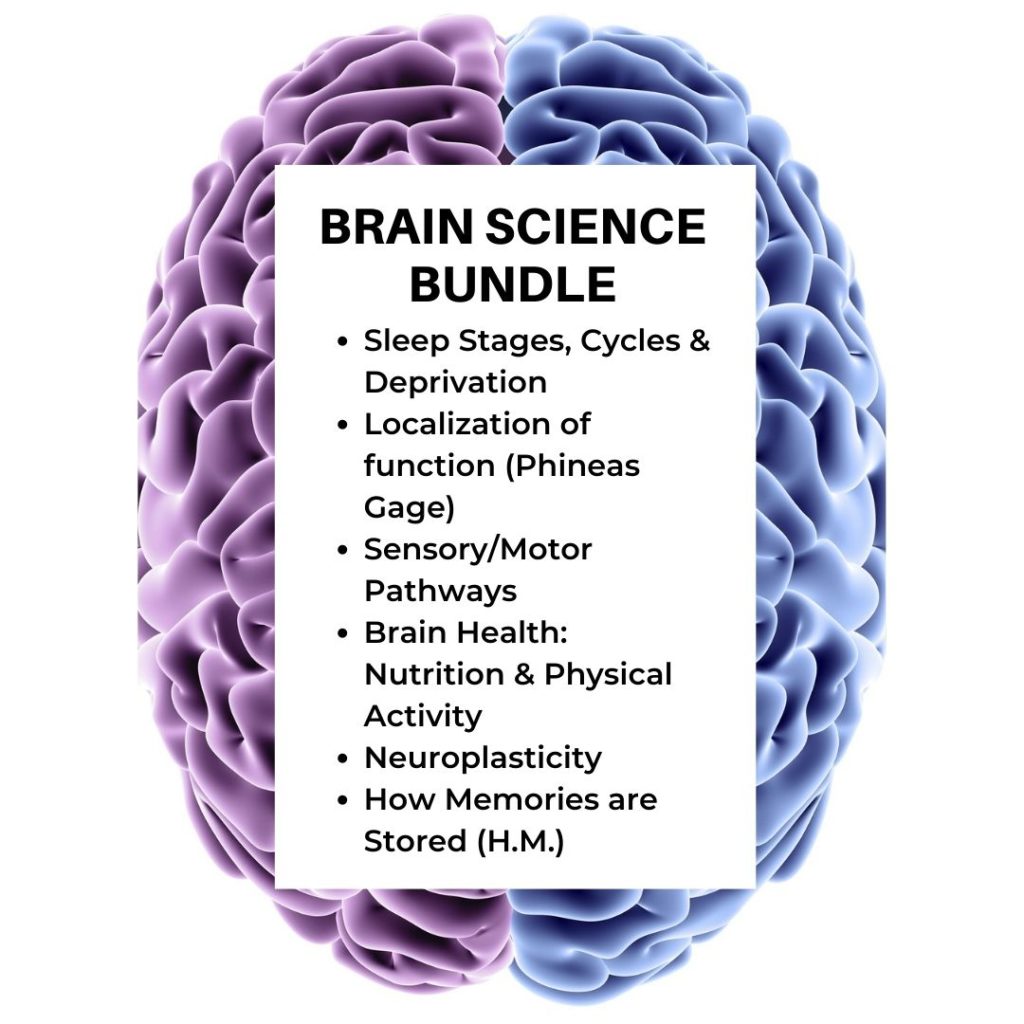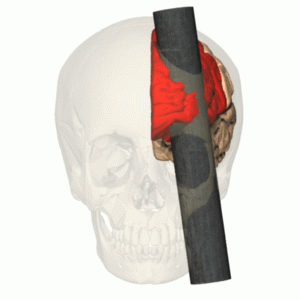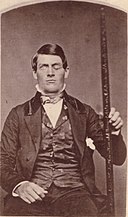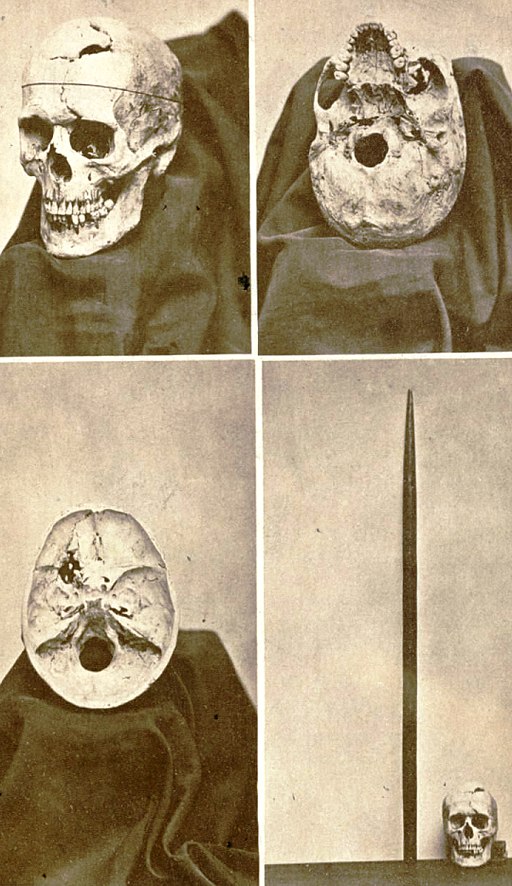Phineas Gage: A Brain With a Great Big Hole in It
Phineas Gage, a hardworking, well-liked young guy had an accident one day.
In 1848, during the expansion of our nation’s railroad system, the foreman was making way for new tracks near Cavendish, Vermont.
Getting ready to blast boulders out of the way, he poured gunpowder into a hole drilled in a rock. Using a tamping iron (metal rod about 3 1/2 feet long), he was pounding the powder down with the flat end of the rod, with the sharp, tapered end at the top, pointing right toward his face, going up and down with each *whack*.
The gunpowder accidentally ignited, and the explosion drove the rod up, into his left cheek, through his skull, and out the top, landing probably several feet away. Remarkably, after a brief period of unconsciousness, he survived (and antibiotics weren’t even discovered yet). Phineas recovered well enough to live on his own for much of the remainder of his life, but people said he wasn’t the same person.
Before the accident, he was smart, even-tempered, and thoughtful.
Afterward, he could take care of himself, but couldn’t hold a job for long and had a terrible time keeping friends. He was often heard blurting out profanities, couldn’t stick with a plan, had sudden fits of anger, and was downright rude.
For the next twelve years, he went from job to job, and moved in with family when he started having health problems, eventually developing seizures. He passed away at age 37 in 1860.
What He Taught Us About the Brain
Researchers and doctors at the time noted the part of his brain with the most damage was the frontal lobe (toward the front of the brain). This got the ball rolling in our process of understanding localization of function in the brain – identifying which behaviors are controlled by which parts of the brain.
Scientists have since identified the frontal lobes as the control center for things like emotional control, planning, and social behavior. It’s because of Phineas Gage we started to really understand what can go wrong, and what we’re capable of, even with a great big hole in our head.
If you want to learn more about him, you can go to Boston and visit the Warren Anatomical Museum to see his actual skull and the rod that passed through it.
For more articles about brain science, check out:
The Little Man in Your Head (Really!)



